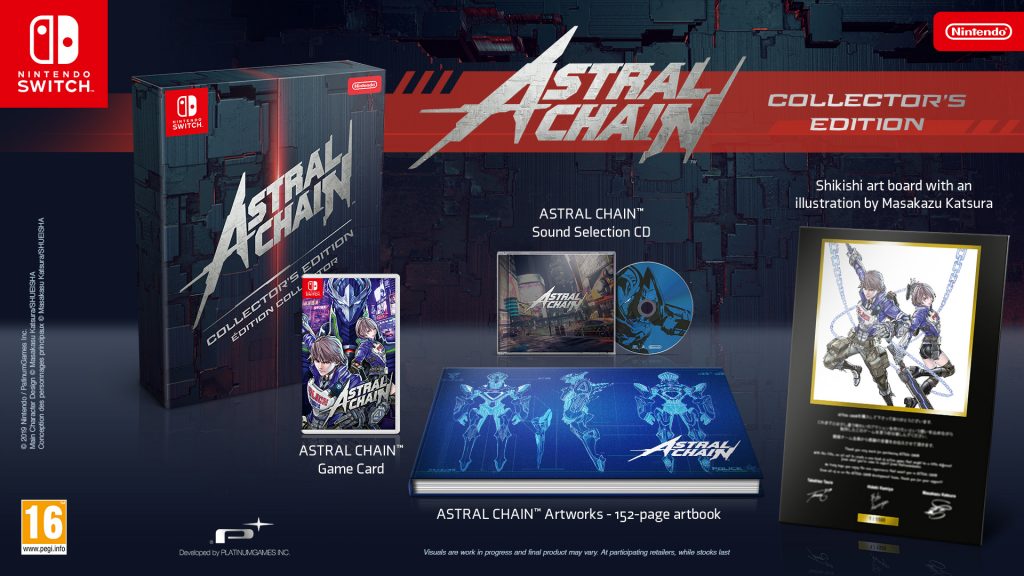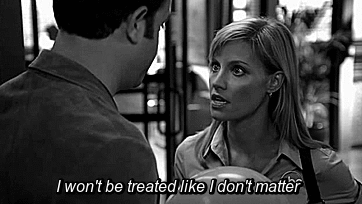Danjin44
The nicest person on this forum
https://www.platinumgames.com/official-blog/article/10328
Hi all! This is Tsukuma from PlatinumGames’ marketing division. I dropped by Shueisha the other day to listen in on a special interview between ASTRAL CHAIN’s main character designer Masakazu Katsura, and its director, Takahisa Taura.
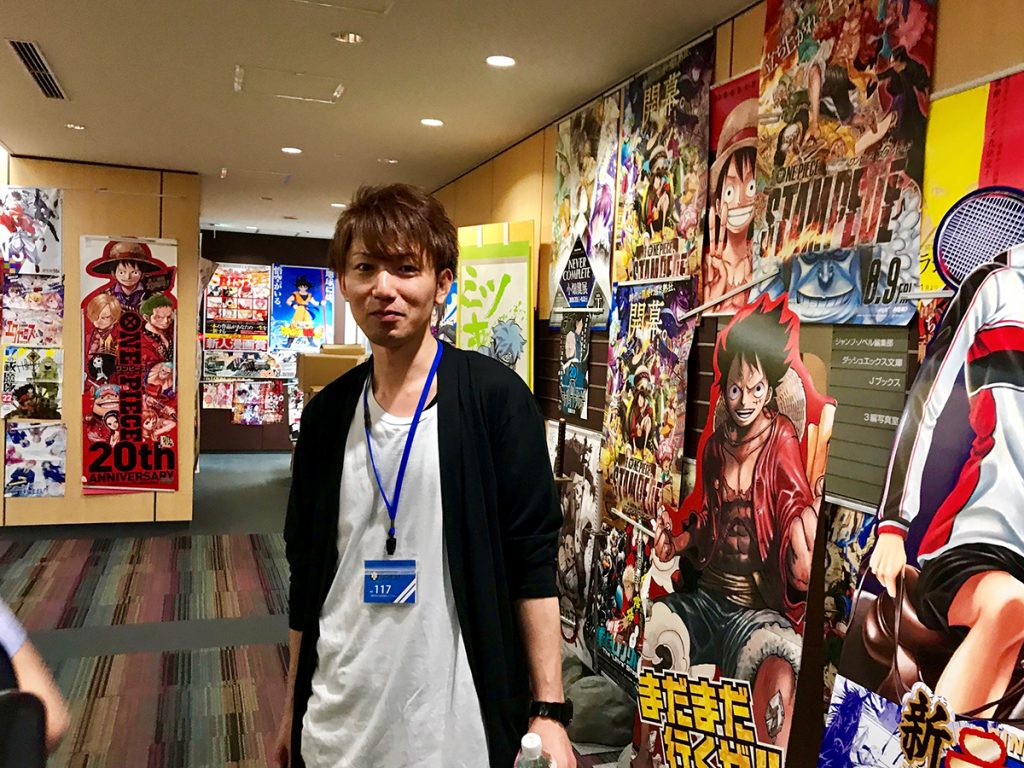
Let’s jump right into it.
Katsura-san, you designed the Legions that serve as the focus of ASTRAL CHAIN, as well as many other major characters.
K: Designing the Legions was a lot harder than the other characters because I started out with almost no information to work from. At the early stages there was a lot of trial and error. I would just repeat the same kinds of parts in different combinations, trying to see what kind of look I could get.
T: We didn’t ask for many retakes of the human characters, but as the Legions are kind of the cornerstone of the game, while I felt bad about it, I asked for a lot of different iterations. We started off with giving them a very organic look. At some point we changed them to be a bit scarier, but I went back on that and tried to make them look more heroic-
K: I liked what we had, but yeah, they wanted something that looked more like a hero.
They also told me the Legions can float so lose the legs, and then later asked me to add them back… but to also still have them float (laughs).
T: We would come up with ideas on our end while he was still working on the designs for us, and we would get new ideas after actually receiving the designs, which just led to more and more iterations. We were pretty much still figuring out what Legions were while Katsura-san was designing them which I feel bad about.
K: Yeah, the requests were kind of a puzzle to figure out.
T: I remember he would write questions directly on the art, like “what do you actually want?”
K: Did you want something cool, something empathetic… I think you had trouble figuring that out yourself. Right?
T: I didn’t want that to be apparent to someone outside the company, so I tried to hide it… but we still ended up going back and forth a lot. Still, I’m very happy with what we ultimately came up with. I think having the head area kind of opened up and hollowed out looks awesome.

K: I’m of the Ultraman generation so I wanted to see if I could do my version of the Eye Slugger (a throwing blade attached to Ultraman character Ultraseven’s head). I think attaching the right and left parts of the head to make that open space was pretty novel. They also asked if we could open up the chest as well. I thought that sounded pretty cool so I just drew something on the spot (laughs). (To Taura) So, when exactly did you come up with the idea of Legions? The game’s initial concept was supposed to be about catching monsters to fight against other monsters, right?
T: Right. We ended up having five different Legions you can switch between, but our initial idea was to be able to capture anything you fought. The problem was, that would limit the total actions we could give each individual monster, which didn’t feel right for an action game. Eventually, we switched course to where we are now. And because of that, there’s lots you can do with each Legion, which I think overall was the better decision.
K: The Legions were actually the last characters they asked me to do. I’d heard the game was about catching monsters so at first I was pretty thrown off when the request came in, but I thought using Legions to centralize the partner mechanic made things easier to grasp in the long run.
T: You’d been doing characters and other concepts for us and we kind of just slid Legions in there at the last minute. We’d just begun putting together the mechanics for Legions and still hadn’t decided anything regarding their design at all.
K: But I had a lot of fun doing the Legions. And honestly, it’s kind of boring if all of your work gets approved on its first pass. You start to think, do they actually like what I’m doing? Of course it’s easy if you just get a “sure, looks good” to anything you draw, but it starts to make things dull after a while.
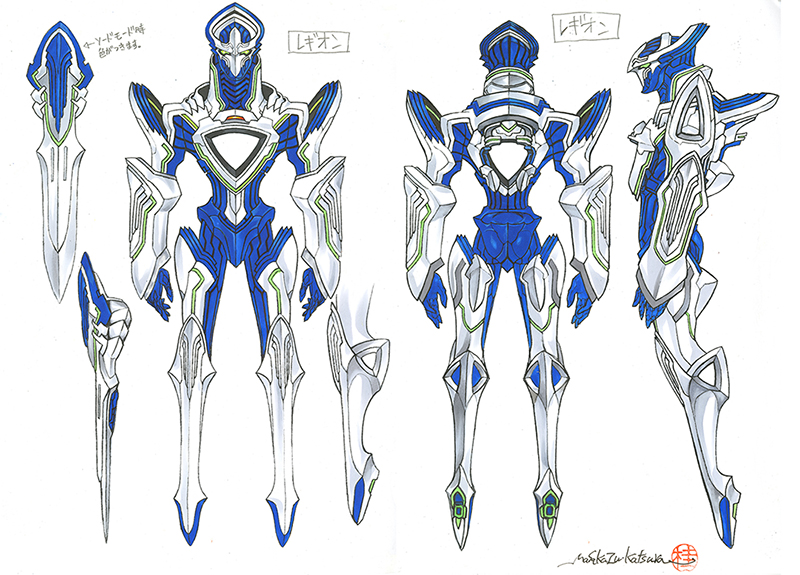
-Regarding the other main characters: the protagonists are a pair of twins, one a boy and one a girl with short hair. Was this always the plan from the get-go?
K: In the initial documentation I received, I remember they weren’t twins. They both had a kind of messy look to them, so they seemed like they wouldn’t care about their hairstyle or anything.
T: We didn’t mention any specific kind of hairstyle we wanted, but when I looked at the first concepts from Katsura-san I thought “…we’re going with this, definitely” (laughs). And yeah, they weren’t twins at first. I just wanted to have a game where you could chose the main character’s gender. But after we received the design concepts, we thought adjusting the story to include the twins angle would make things more interesting.
K: I’d been told you could choose the protagonist’s gender, so I tried to give both of their faces a similar look. That might’ve been the catalyst. I think had I given the girl a more cutesy look, no one would’ve picture them as twins.
T: Right, if her art had been like that, I don’t know if we’d have thought to make them twins. That’s just one more way I think your art was able to inspire new ideas from the team.
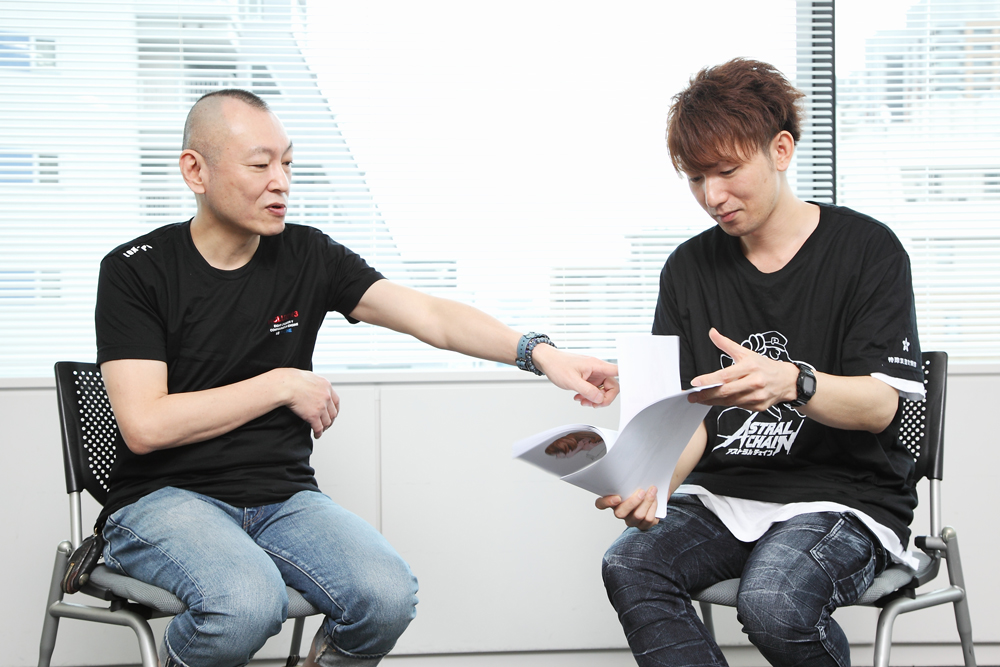
-The box art for the Japanese Collector’s Edition makes it very clear that they’re twins. What did you want to make stand out in this illustration?
K: I wanted to give it a really beautiful silhouette. The original work order didn’t ask for a chain, but I thought that would help balance things out so I added that in as well.
T: I first saw it while we were still working on the game, and the moment I saw it I thought there was nowhere I could criticize it (laughs). (To Katsura) You were really able to draw out the power in the characters’ eyes. It’s so awesome, one of my favorite drawings. We first did the right side of the drawing in-house, based on Katsura-san’s designs, and then handed it to him to touch up our side and finish the rest of the picture. I hope the story in the game speaks to you looking at this picture.
K: It was fun adding the fade and wear to the “POLICE” letters on the uniform, just like they are in the game.
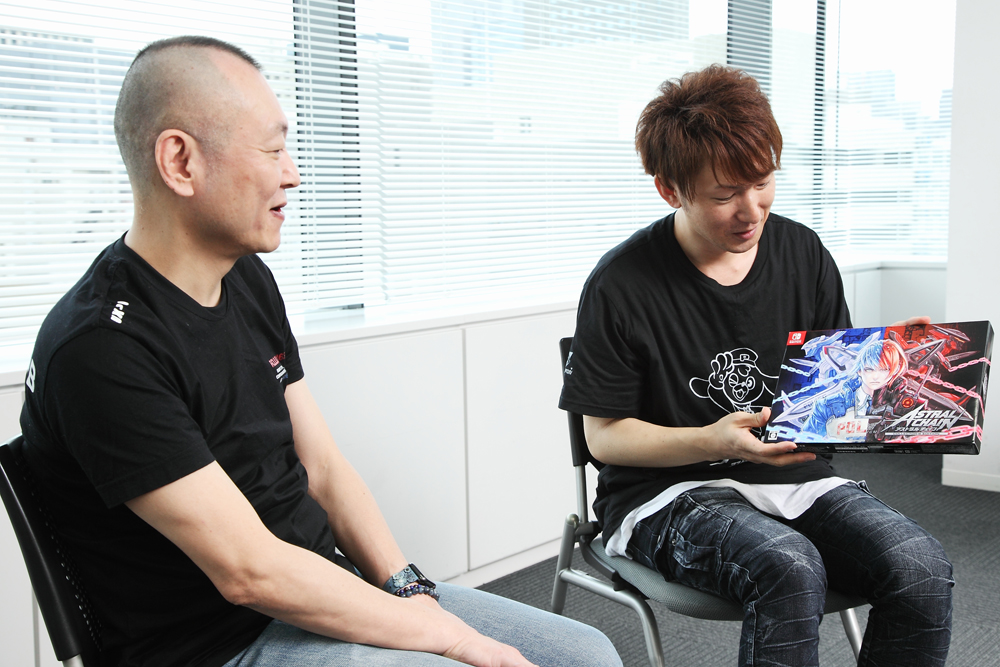
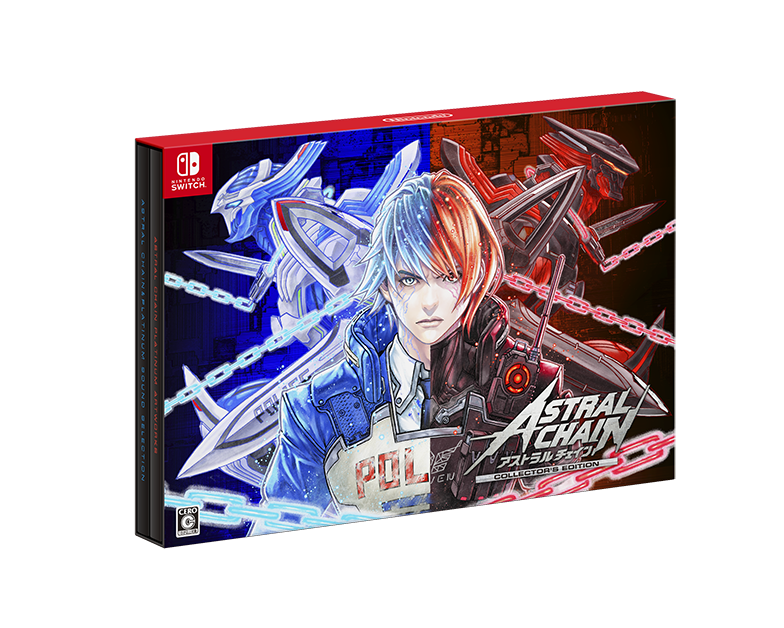
– (To Katsura) Do you have a favorite character?
K: Of course I like them all, but I particularly like the engineer character.
T: Everyone on the team’s collective jaws dropped seeing Katsura-san’s concepts when they first arrived.
K: I had a lot of fun with it. I remember thinking to myself, maybe I’ll give this guy a bit of a hunch, etc… it was fun to do the drawings while putting together lots of little ideas like that.
T: All of the memos and explanations on your concepts were always fun to read. I never imagined you’d write that much detail for us, and it made making the characters that much easier.
K: If I were to do the same thing for anime concepts, there’s a high probability anything I’d write would just be ignored. I mean, I’m just scribbling my personal ideas, so that’s fine though (laughs). Now that I think about it, I kinda liked Jena too. Were you able to make it look like her makeup’s running in-game too?
T: We did. If you don’t know, Jena’s actually (spoiler omitted).
K: Was that decided later?
T: It was. When we went back and revised the story, we changed a few of the assumptions we had at the start of development.
K: It all makes sense now. When I first heard the idea for Jena’s character, I pictured her as someone who doesn’t have time to take care of herself, and gave her tattered clothes and messy makeup.
T: Those visuals were one way that inspired us to expand her story.
K: When I first showed Jena to my wife she told me she looked like a zombie, so I thought I might’ve gone a little too far.
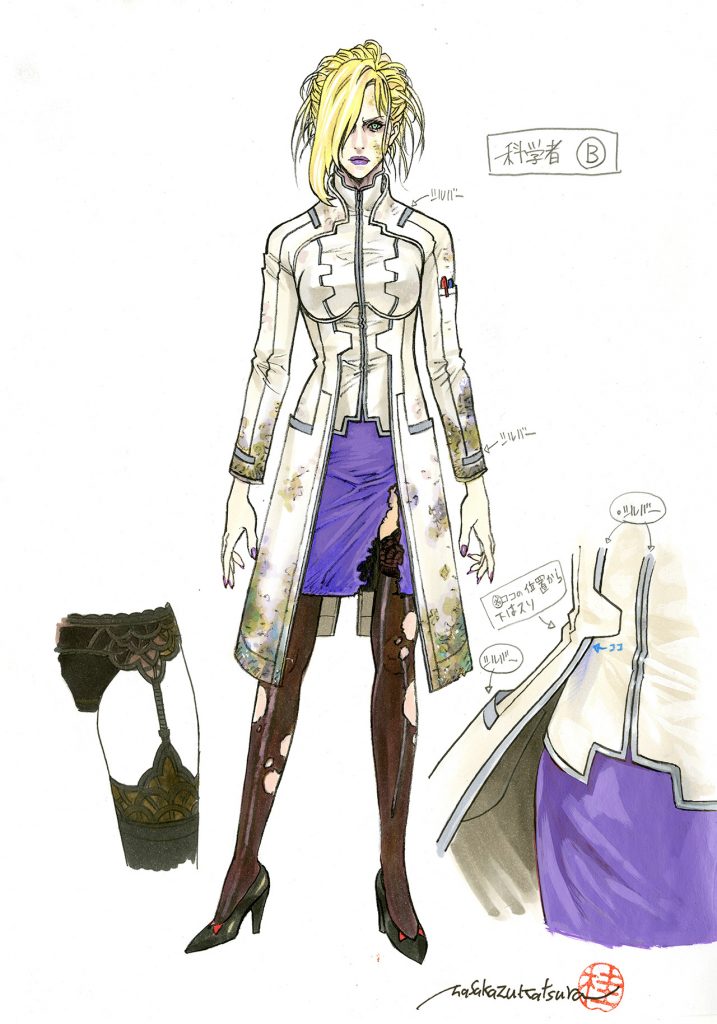
-Do you show your wife a lot of your work?
K: I do. And she’ll give me all kinds of feedback from “mmm, kinda lame” to “hey, I like it”. If there’s something that really bothers her I might fix it, but I fight back sometimes too (laughs).
-I think it’s apparent that the game was heavily influenced by Katsura-san’s art. How did you come around to inviting him on the project in the first place?
T: In my first and second years of high school I was really into ZETMAN. From there I started going back to his earlier titles. SHADOW LADY, D・N・A2, etc. I didn’t have the chance to experience them when they came out, so I just started with ZETMAN and backtracked from there. I was born in 1985, the same year that they serialized Vander (another manga by Katsura).
K: Don’t make me feel too old (laughs).
T: This game takes place in a sci-fi world with a police force as the main characters, but the original design documents were completely the opposite: a magical, medieval fantasy world. Nintendo stepped in and told us that the genre had been done many times before, and it lacked the hook this title needed. So we explored a lot of new ideas, and ended up with sci-fi. And the switch to sci-fi ended up being heavily influenced by ZETMAN, so I asked if we could have Katsura-san do the character design. I never expected him to accept, I mean, he’s like a legend to me. Just sitting next to him makes me tremble a little (laughs). But I remembered that he had done some Bayonetta art in the past, so I thought it might just be worth a shot.*
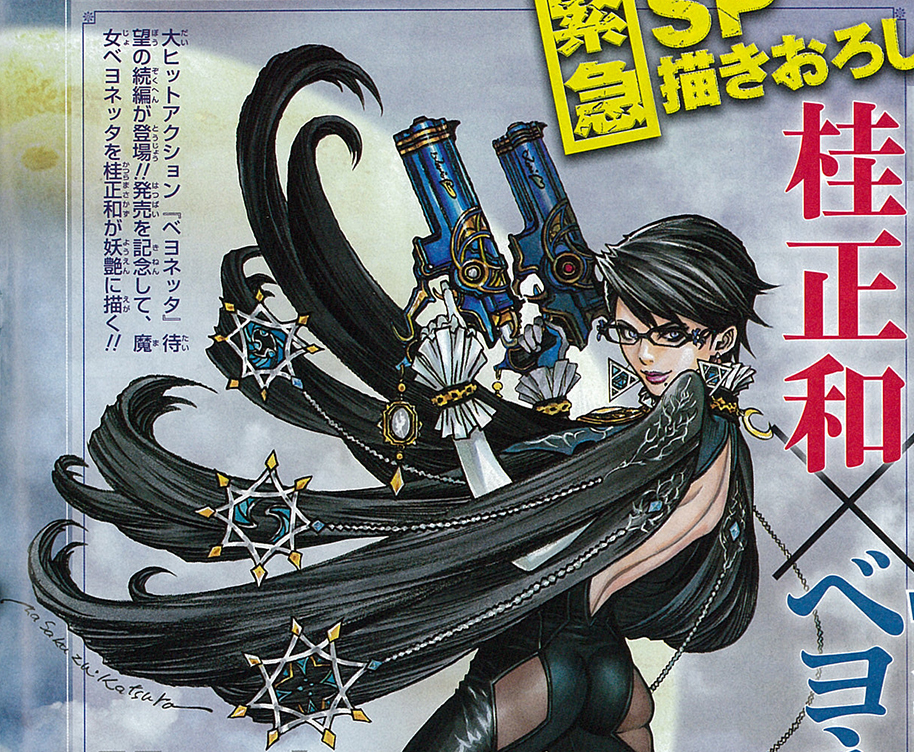
K: I don’t know if I’d say I’m a legend (laughs). I remember drawing Bayonetta. I remember thinking it must be hard to make so many little trinkets on a game character.
T: All you need to do is make it once. With manga or anime, you have to redraw every detail over and over again, but with a game, you just need to make it once, so you can really go overboard with the details.
K: The guns, the accessories, I just remember there was so much stuff. I would never do that with manga, giving a character so many decorations and clothes. But since it was just concepts, I could have fun with it.
T: On the game’s package we see the protagonists in their full gear, but Katsura-san did other versions with the armor off, and more. I wanted these to be implemented in game, so we’ve made the player’s outfit very customizable. You can wear just a collared shirt if you want; we’ve kept the designs just as they came in from Katsura-san.
K: Rather than just simply making designs, it was fun to visualize the character wearing different equipment over their uniform. How should I draw the collar so that it’s just visible underneath their armor? I thought it’d be easiest to answer that question if I went into full detail in my designs to convey that.
T: Breaking things down for us was definitely a big help, and everything we received we thought “well, this all has to go in” (laughs). Of course, all I have to do is give directions, for the 3D modelers who have to do the actual dirty work, (creating all the different variations) made them throw their hands up in the air a few times. But they enjoyed the work (laughs). I really appreciate the concepts from Katsura-san and all the work done by our development team.
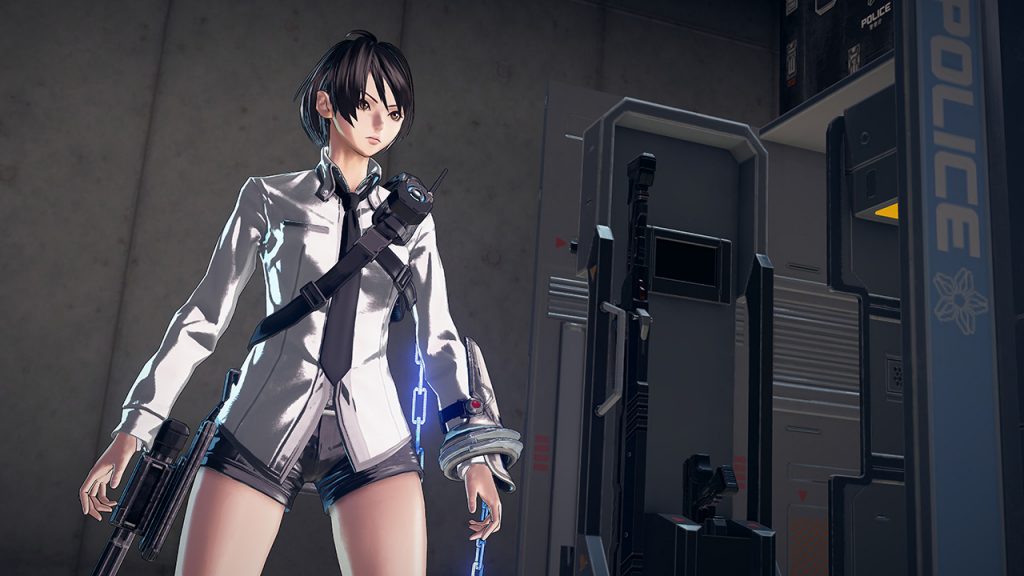
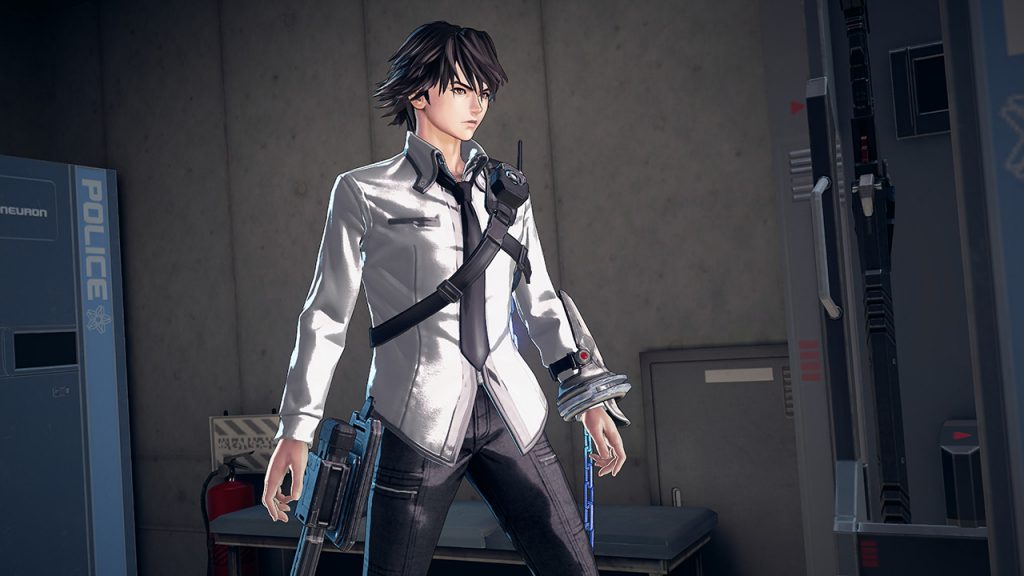
K: I was told that the police will wear armor when in battle, so I thought I’d need to make their standard uniform pretty basic. I didn’t receive any instructions to do the regular uniform, but I thought there would be less complications later if I just went ahead and drew it. And I drew three different types of helmets understanding they might not be used at all.
T: We used all of the different helmet patterns though. We wanted there to be a lot of police but we couldn’t make faces for all of them, so we just had them wear the helmets to cover their face and, no problem (laughs). It’s a common game development tactic.
K: Good, I was kind of hoping they would be used that way when designing them. All they’d need to do is change the chin and they could pretty much get infinite reuse out of them. I like how they kind of look like masked heroes from the front, but it looks more like a gasmask from the side.
T: He would understand these were for models that would need to move and would write notes like “this part of the helmet is made of soft material”. It’s actually not that common to find a character designer that will think on that level for you, and that’s led to problems more than once before. That was just one reason that made working with Katsura-san so easy, and made me realize the difference of working with a real seasoned pro.
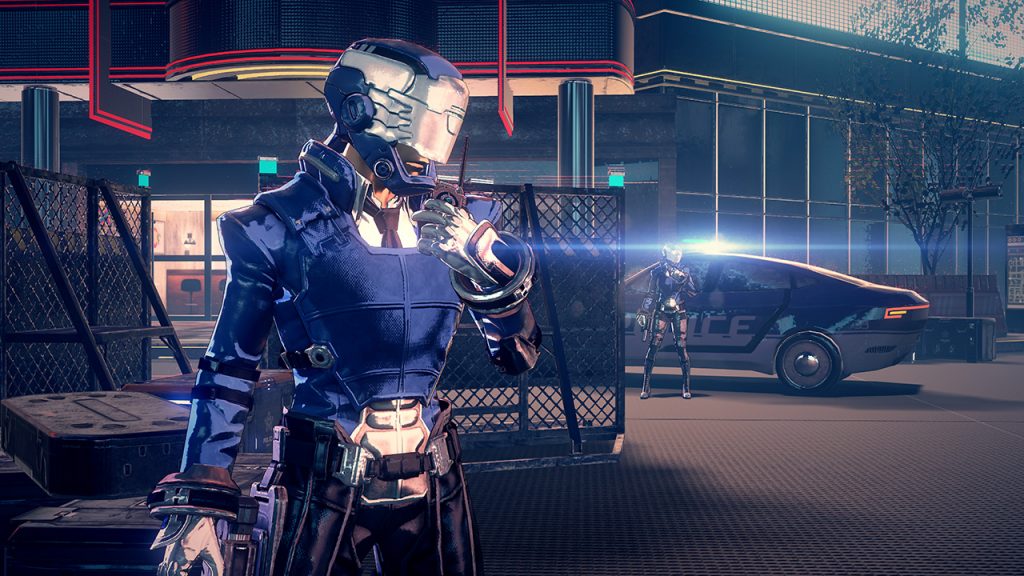
– (To Taura) Who would you consider your favorite character?
T: I like every character but, if I had to choose I’d pick Yoseph. The way Katsura-san draws an older man, there’s just always something hidden deep in their expression that I can’t get enough of. I really like the design of his coat too.
K: You have to picture what kind of brands would be popular in this world. What shop do the police buy their supplies from? These are the kinds of questions I would ask myself while drawing. That’s why all the characters associated with the police have this kind of cog-like emblem on their clothing. All you have to do is create a little keyword like that, and you can’t use it on anyone it doesn’t belong with, but you can use it to group characters of the same background, so it really feels like they’re all getting their clothes at the same place.
T: I really appreciated how you designed the characters to make them feel they’re a part of the same world, even without us asking.
K: That’s the fun thing about character design, thinking up all the details. If the enemies are wearing clothes that look just like the police, isn’t that kind of a downer? They’re supposed to be opposing sides of beings from another world. It doesn’t feel right to put them in clothes that have the same look and feel. If it’s someone from another world, I think they deserve to be given otherworldly clothes. That’s why on ZETMAN I did the design for all the heroes and let my friend do all the enemy designs. That naturally made both sides feel different. After that it’s just thinking about what the trends of this world might be at this time period and designing things out.
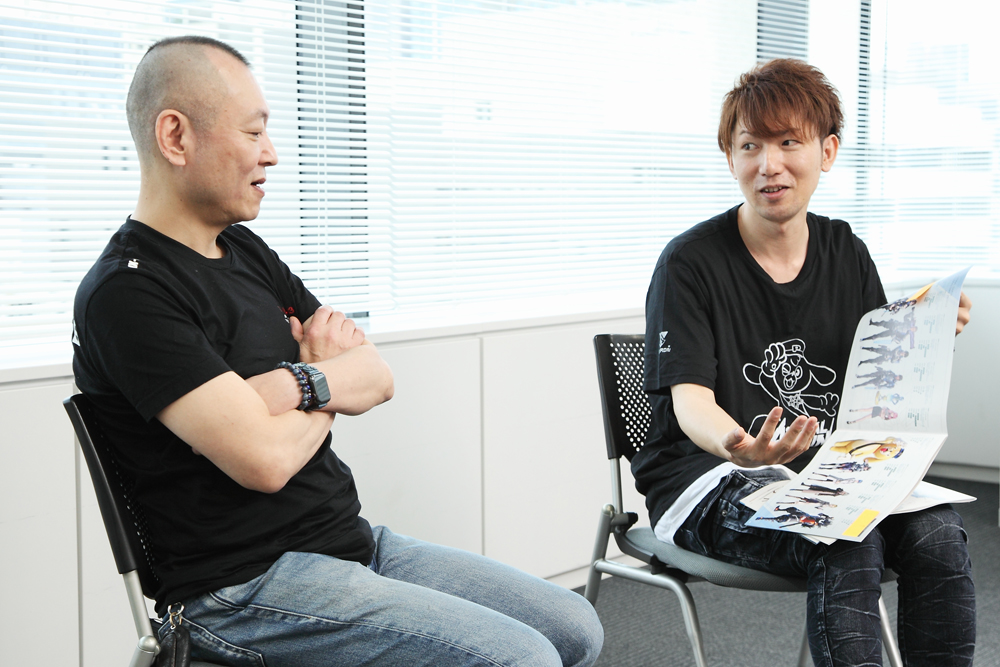
-Have you seen any footage of the game so far?
K: The world was so much more detailed than I’d expected, it looked great. I’m just a little worried that I’ll be able to properly handle the Legion when I play. How do you switch? Attacking with the Legion vs. attacking with your character. You have to switch them out, right?
T: Basically the two are controlled by the ZL and ZR buttons. The Legion gets the left side whereas the player character gets the right side. So really all you have to do is press those two buttons and you’ll be able to pull of some pretty cool combos. If you want to go beyond that, you can use buttons to switch out Legions too.
K: Just a matter of practice, huh.
-Taura-san, what do you think you wanted to achieve on this project more than anything?
T: My key motivation for the project was to create an action game where you controlled two characters connected by a chain. There are games besides this one that feature battles with multiple characters at a time, but I wanted to throw a chain into the mix and create mechanics like tying up enemies with it, so that’s what I did. I think that being able to control characters that Katsura-san himself designed should be a big push for this game too. He’s been doing art for decades, so he has fans older than me, and fans younger than me. I’m very grateful that we’ve been able to attract a lot of people to the title through his work.
-Wrapping things up, Katsura-san, do you have anything to say for everyone reading this blog?
K: I know it sounds like a sales pitch, but I really did give this project my best and had a lot of fun with it, so I hope that you’ll consider buying the Collector’s Edition so you can see all of the artwork in full detail. Thank you!
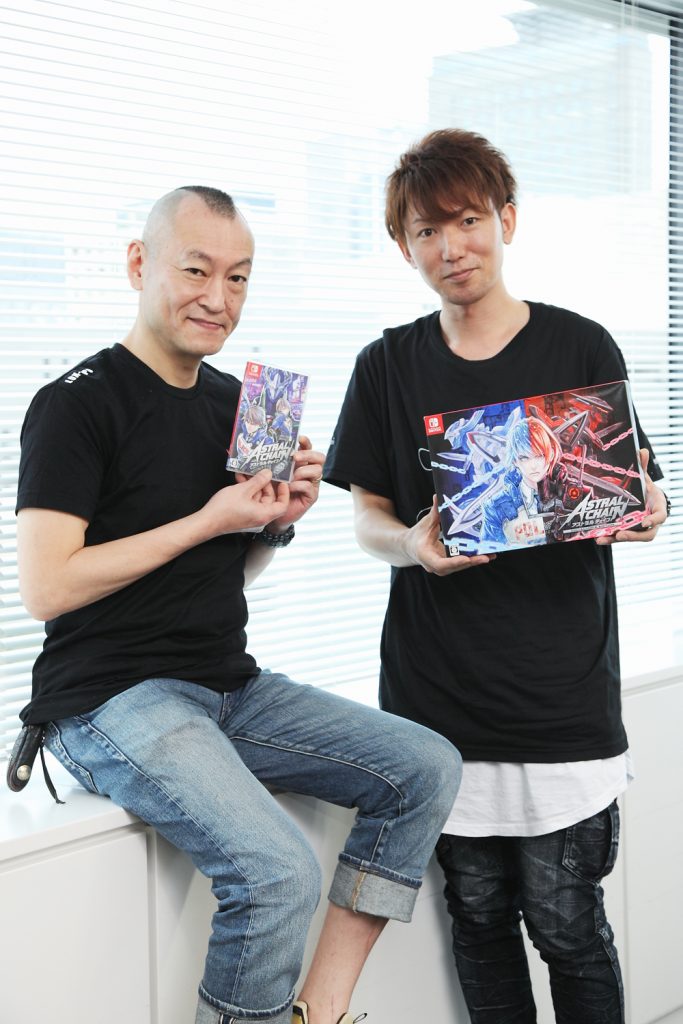
Katsura-san, thank you so much for taking time out of your busy schedule to stop by and talk with us!
For our fans in Europe: please consider the ASTRAL CHAIN COLLECTOR’S EDITION mentioned above, featuring a 152 page artbook full of Katsura-san’s illustrations, and a 31 track OST from the game. The Collector’s Edition goes on sale the same date as the retail version, August 30, 2019!
